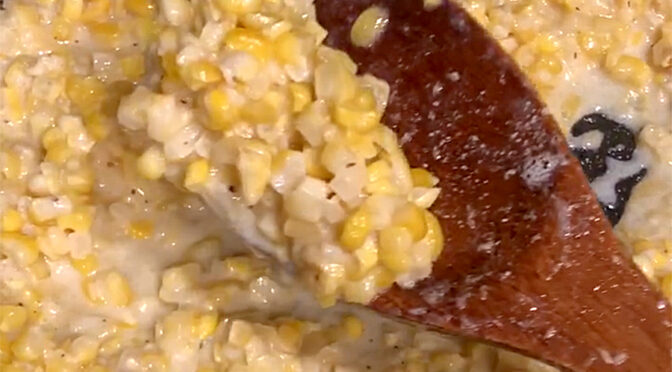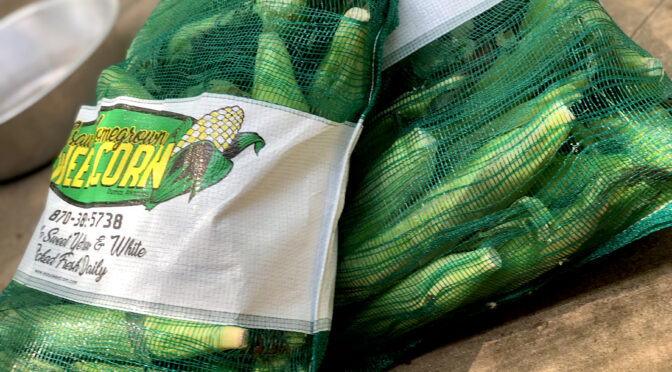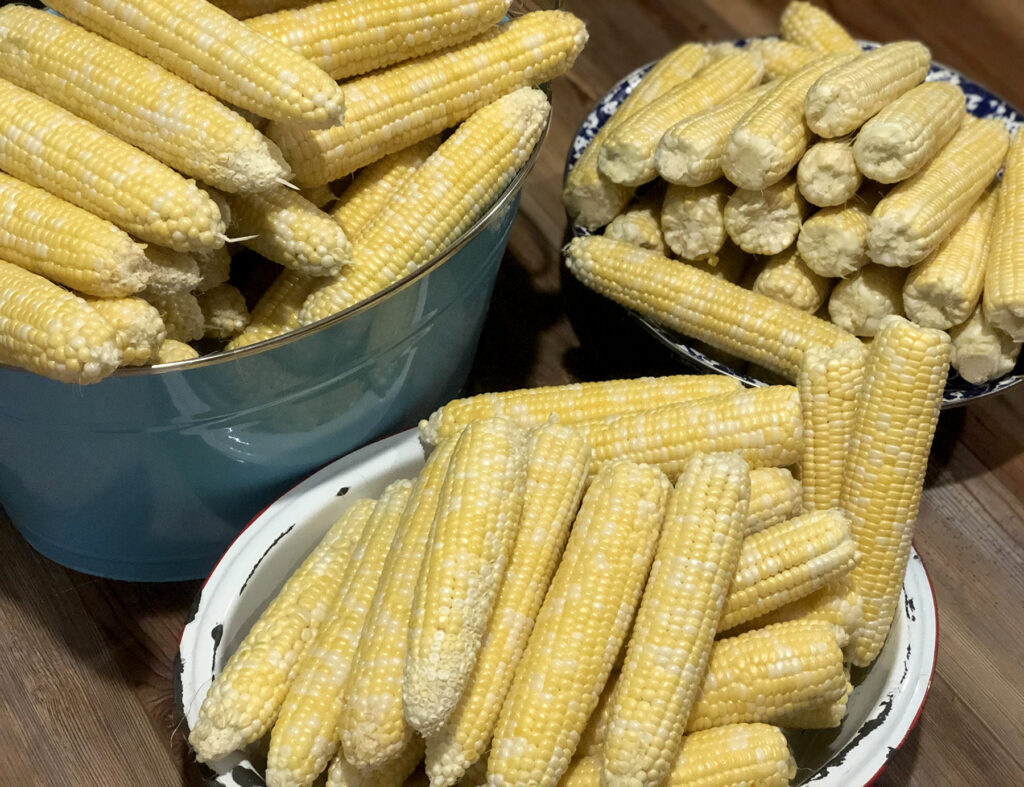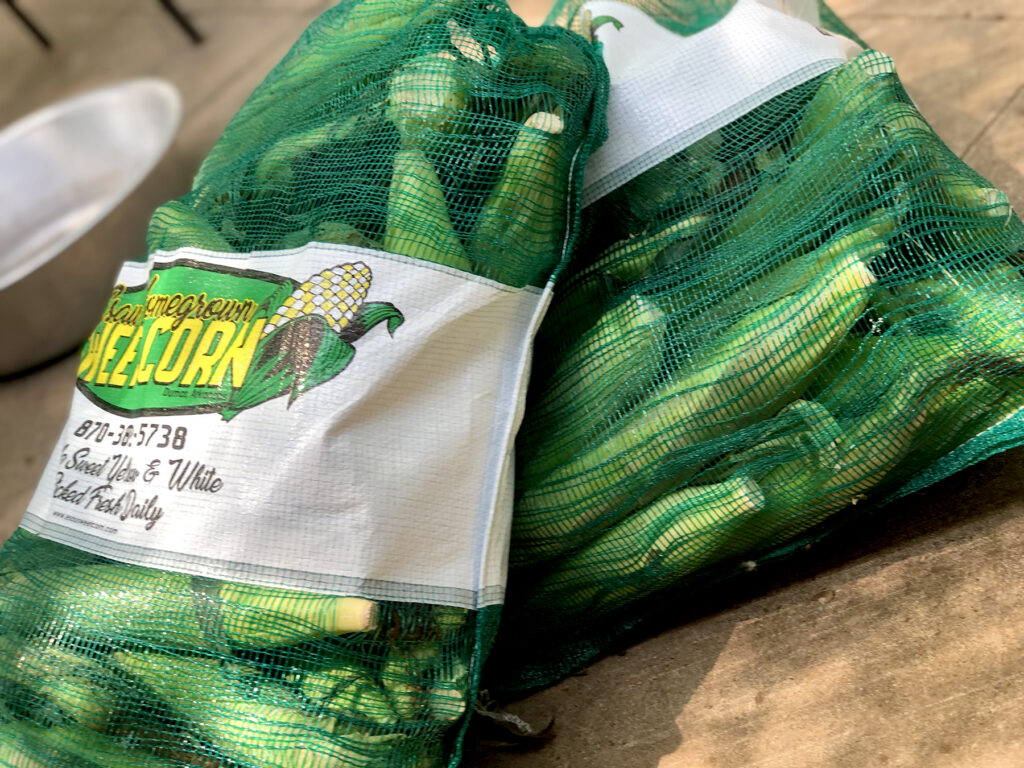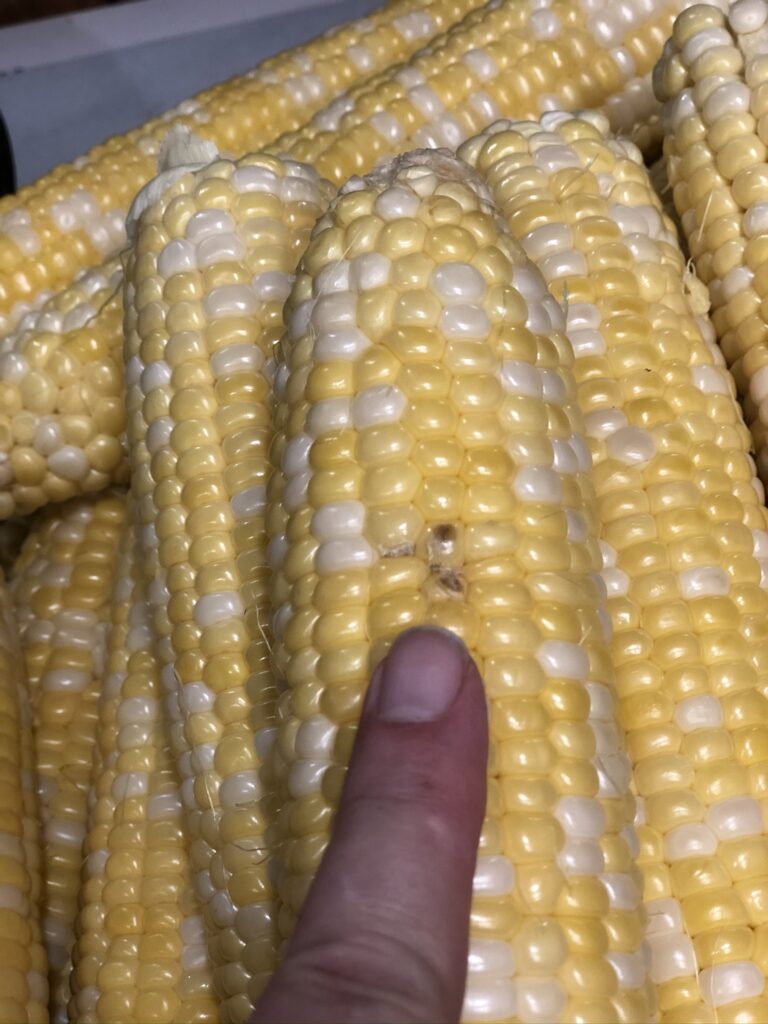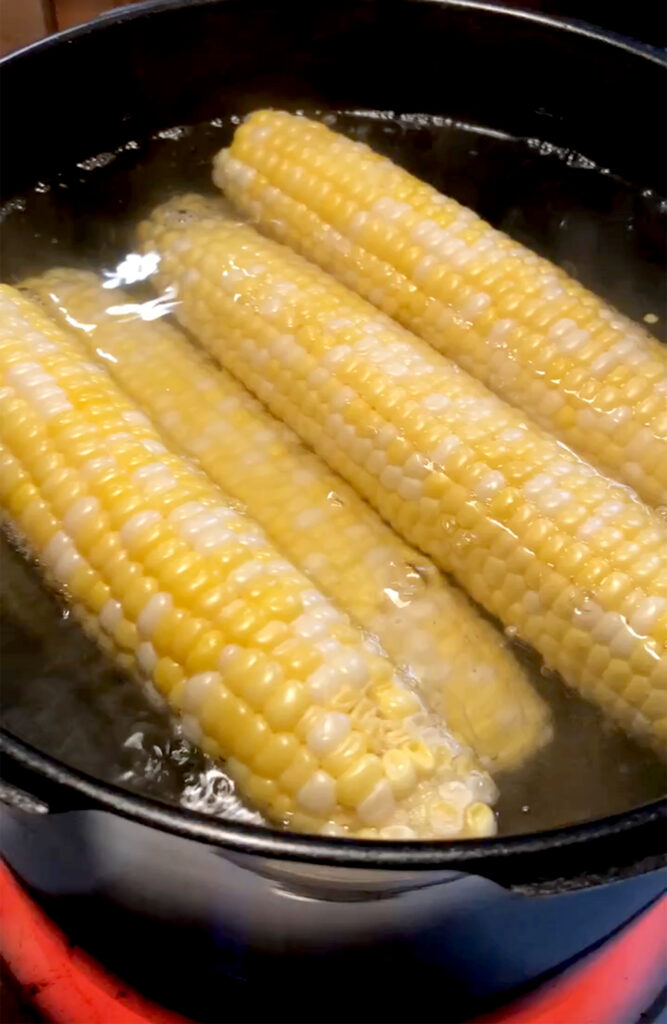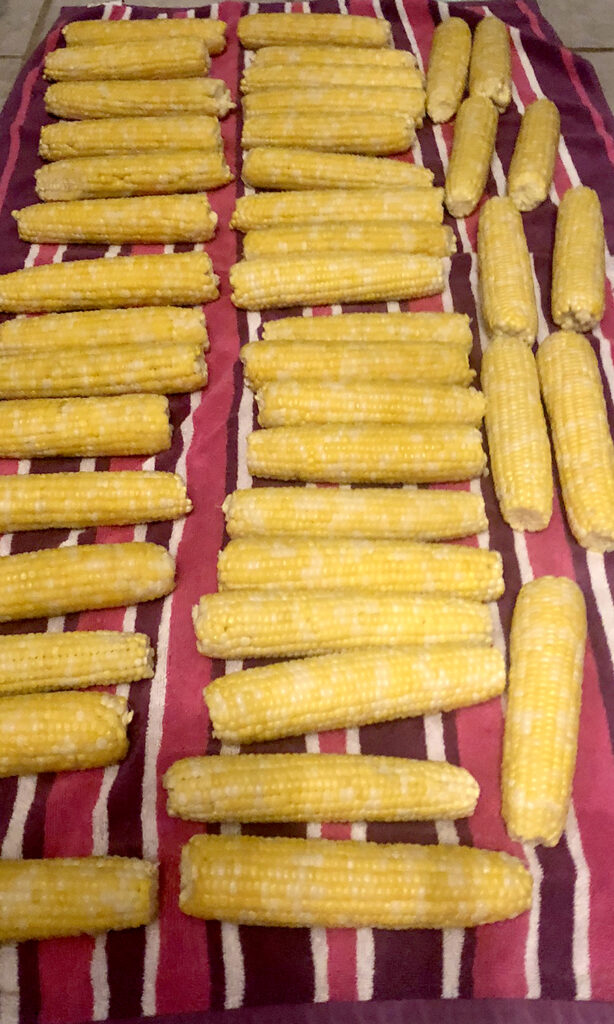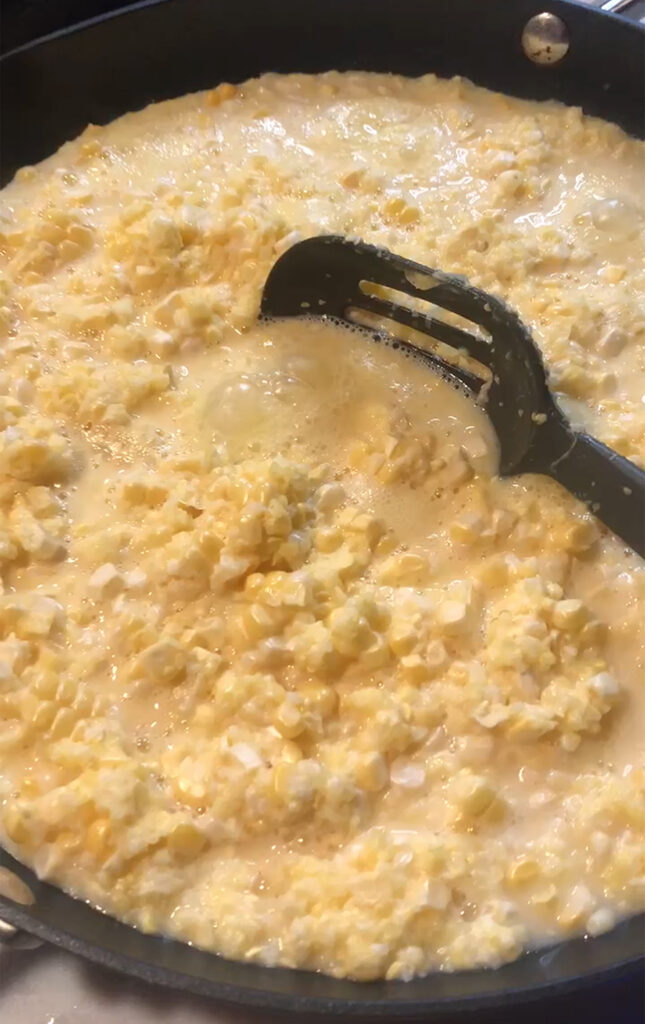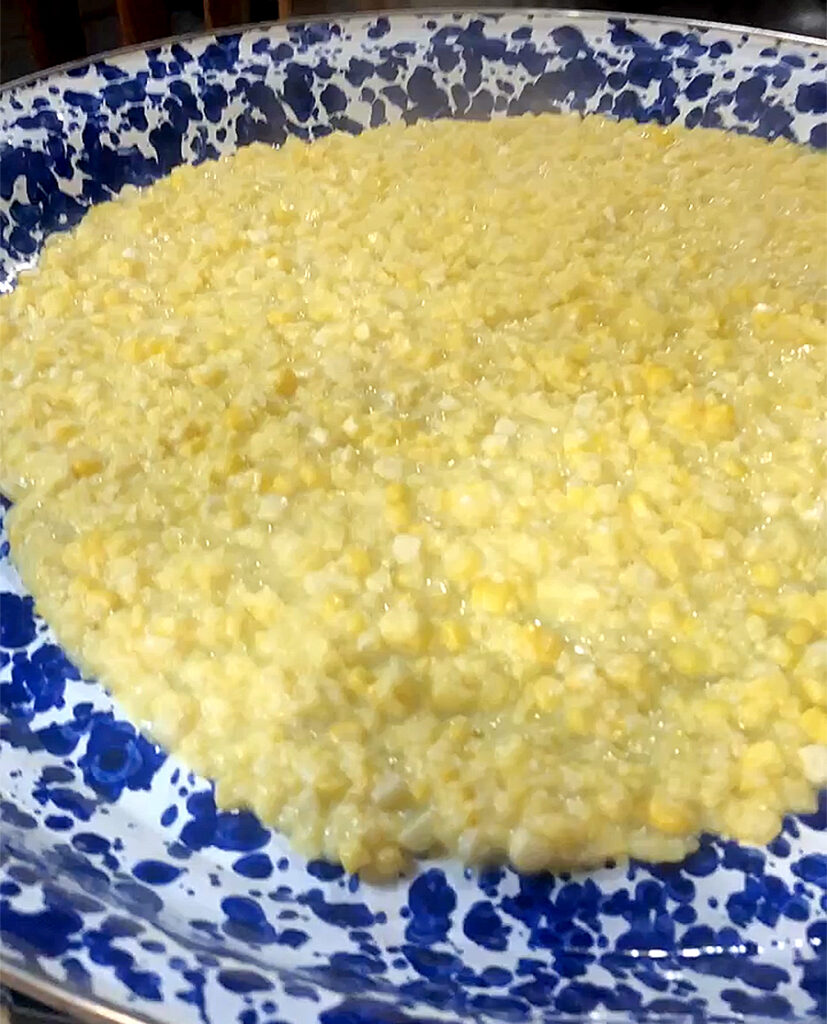(or Skillet Corn or Cream Style Corn)
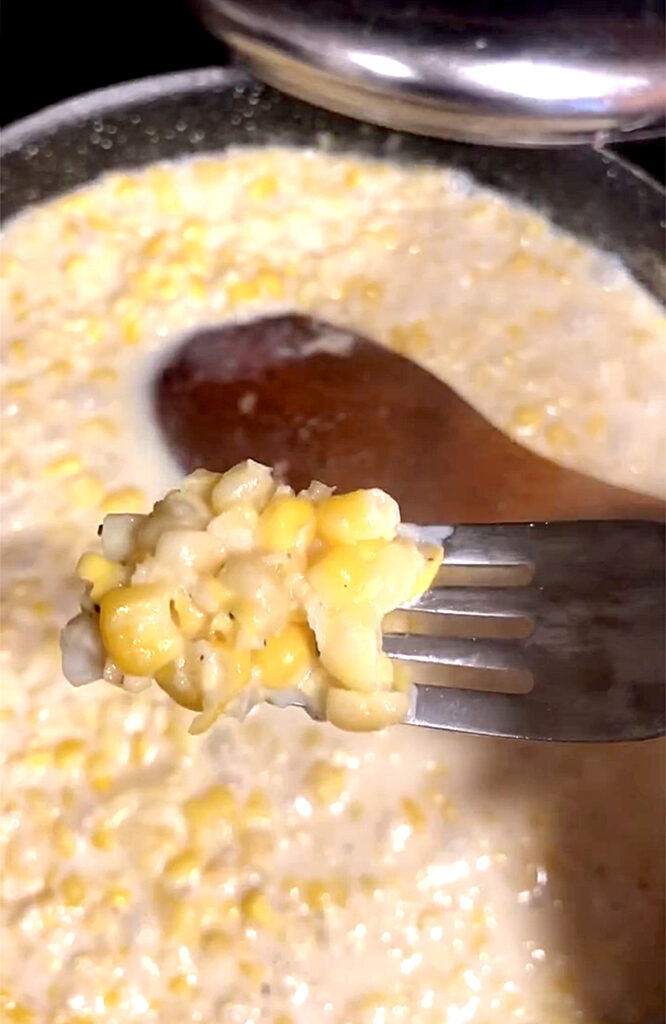
Here’s an easy recipe for cut-off corn deliciousness:
1 qt. bag cut-off corn
1 heaping Tbs bacon grease
4 Tbs butter
1/4-1/2 cup cream or whole milk
Place nonstick skillet on medium-high heat and add bacon grease and butter.
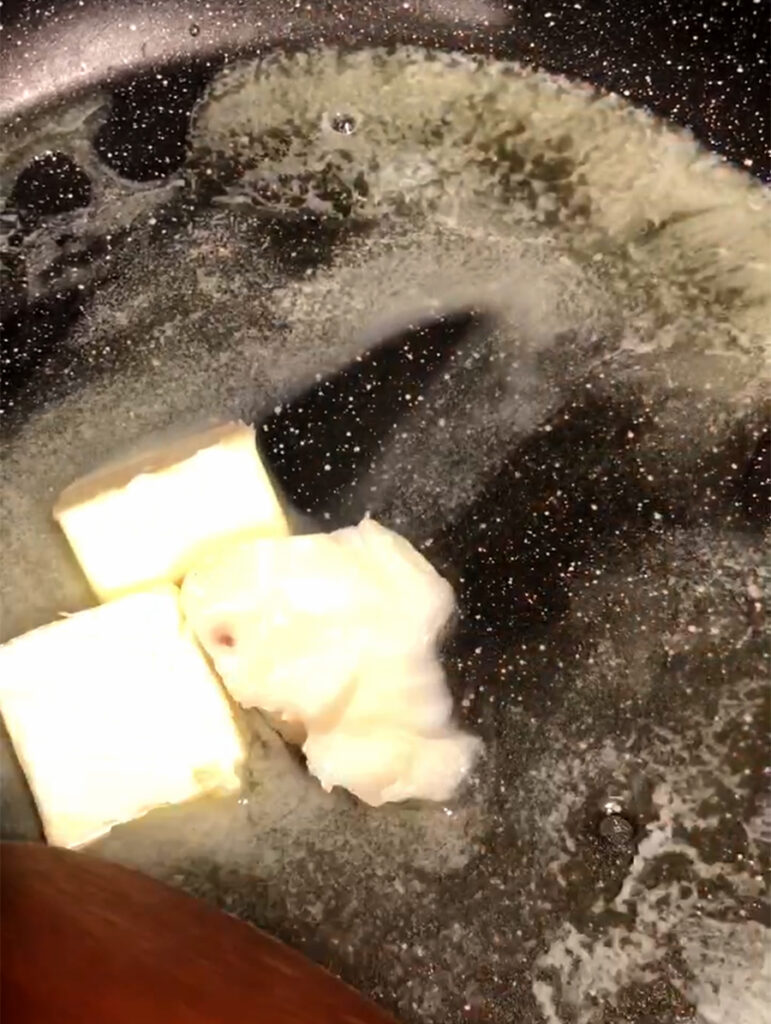
Allow that to melt together and then add your thawed corn.
(Or forget to thaw it, get it in the skillet as best you can, and cover with a lid to allow to steam and melt, stirring occasionally.)
Season with salt and pepper to taste (optional: a pinch of sugar if your corn isn’t as sweet)
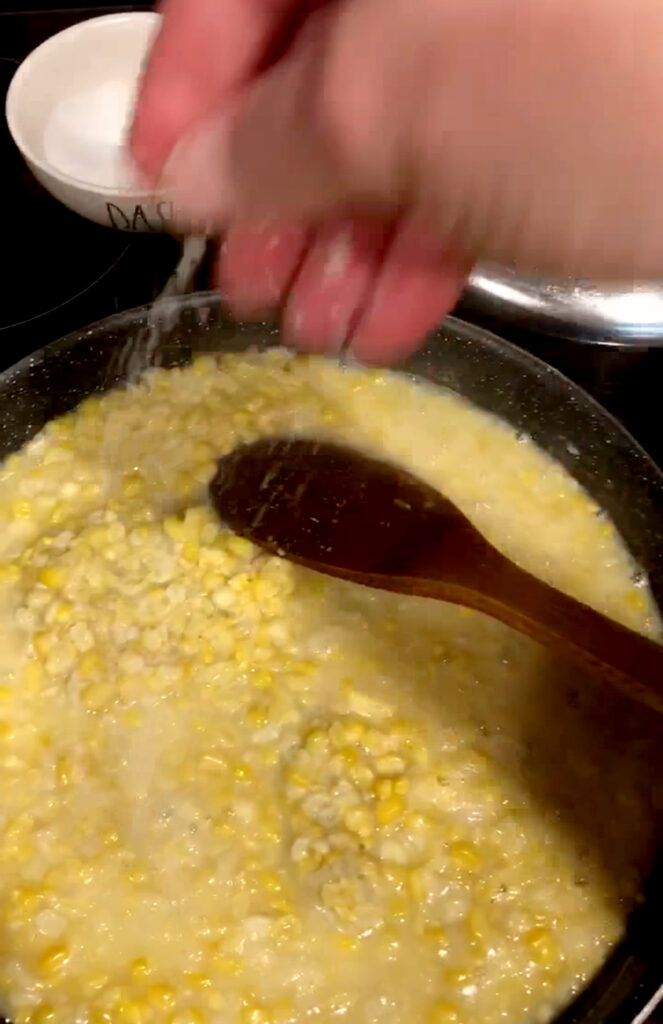
Stir it all together and allow to cook for 5 minute.
Adding a little cream or milk to get it to the consistency you like.
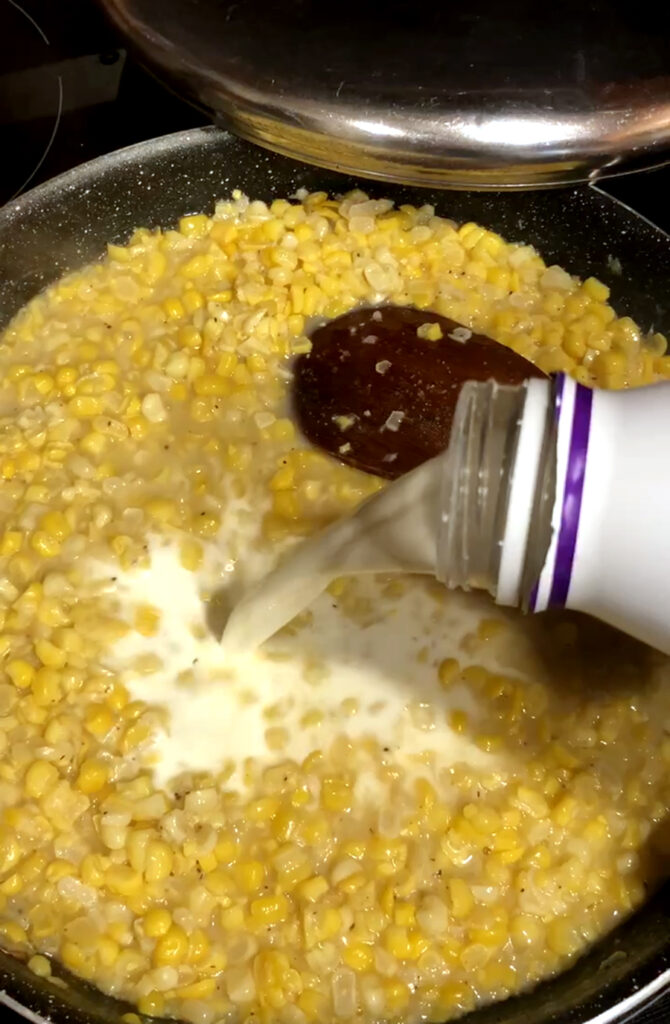
The story:
My mom Juanita learned how to make cut-off corn, as we call it, from my grandmother Josie Ward, who learned to make it from her mama. Josie only added butter, bacon grease, cream, and salt and pepper. Simple ingredients because it is what she had on hand. But those ingredients made a treat out of the ordinary.
They used field corn that had been planted for themselves and their livestock and began the harvest in late summer when the tassels on the corn dried out and started turning brown. They’d pull back the shuck from the top of the ear and see if the kernels were formed and plump. The best ears were considered those that had the least amount of worms or worm tracks and the juiciest, plumpest kernels; and that was saved for the family. These were shucked, silked, and had all the bad spots cut off. Josie would take fresh corn and cut off the kernels (thus the name) and scrape the milky sweetness from the cob. This would be a treat for supper the night of “a pickin”. Those meals with fresh-from-the-field, cut-off corn were the best. Almost equally as good, was the corn she preserved in jars with this same method, adding the extra few steps (about a day’s time) to jar and process it in a pressure canner. There were no freezers back then so corn was jarred and canned for winter. Lorene, my dad’s mom, did not have her own pressure canner so she used the local cannery. This was a building down on West 5th St. in Waldron, Arkansas. It was set up specifically for those who needed to get their food preserved by the pressure canning method. She would gather up her vegetables, fruits, jars, rings, flats, whatever other canning ingredients she needed, and her two little boys and go wait her turn to use the canners.
Some of the harvest would be cut off and taken to the local grist mill, down in the area of East 5th and Featherston Streets, which was run by Old Man Smith, as he was called. This made a superior cornmeal that turned out a deep yellow color with a strong, sweet earthy scent. You could stand and watch your corn ground and be handed back to you for the year’s cornbread supply.
Some of the corn would be used for hominy and grits, but that’s a whole other story.
The largest portion of the corn was taken inside the cellar or smokehouse and hung up with shucks intact to preserve it longer. The rest was kept in the corn crib in the barn. Sometimes, before it completely dried out, they’d grab a few of the plumpest ears left in the crib and take it inside to soak. This plumped up the kernels enough to make it fit to eat for corn on the cob.
What wasn’t gleaned for the family was fed to a variety of farm animals. It’d be shucked in the field with shucks left to compost on the ground. Two ears were rubbed together so that the kernels fell off and that was thrown to the chickens. Others were shucked and the whole ears thrown to cows and hogs. The cobs were left in the field to be trampled, peed on, and rolled in cow patties by the animals living there. These were then perfect for corn cob fights. Yes, it was a thing. Kids then did not have their thumbs on a phone screen and toys galore so they amused themselves by walloping each other with corn cobs. It was kind of like a snowball fight behind snow forts except you were behind whatever was available and throwing hard cobs. And my dad says, yes, they hurt. They’d dig for the nastiest corn cobs that had been soaked with animal urine, or better yet, one that had found its way into a cow patty. Not only did those hurt the worst and raise a big whelp, but they were the grossest thing to be hit with. And they aimed for the head. You wanted to see a big, cow patty-smeared whelp on your opponent’s head. And nobody ran crying to tell on anybody. They just went and found a worse corn cob and chased their attacker down. According to dad, this served a two-fold purpose. One, you learned to aim well and dodge better. And two, you got tough pretty quick. His quote, “Sissies were few and far between.”
So, yes, bruises were plenty. Pain was real. Toughness was learned. And fun was where you found it. Sometimes, it was found in a corn cob.

